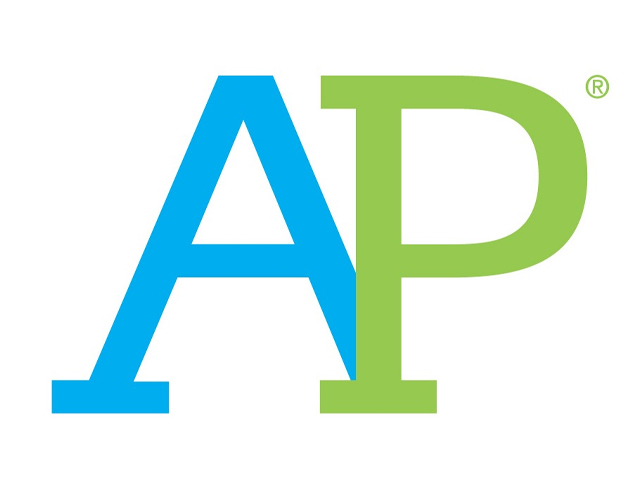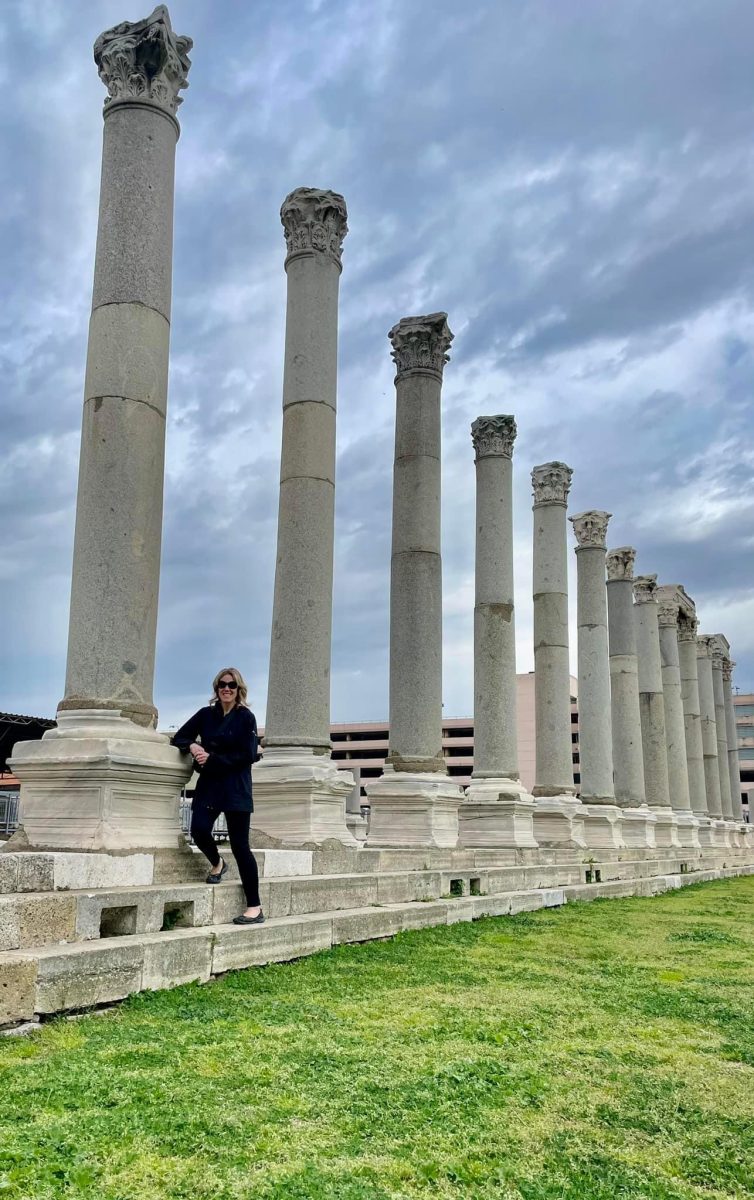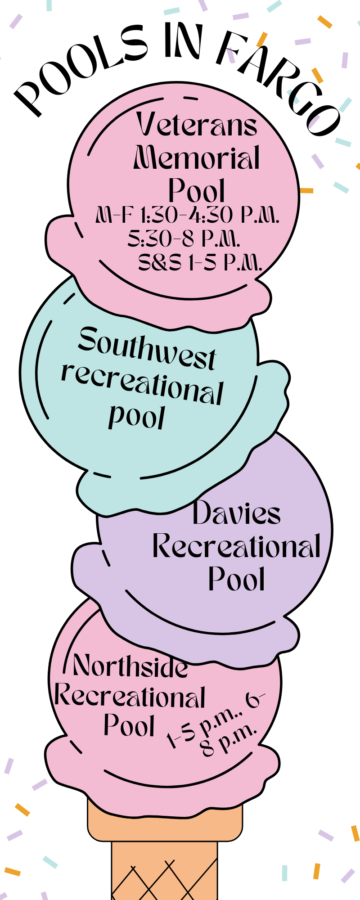“AP courses are only for the top of the top students” is a common belief. I’m here to debunk that. Everybody is capable of AP courses, whether you believe it or not. If you’re not sure what AP classes are, there are college-level courses that you take in high school, and you can get college credit for it by either taking the AP tests that happen in early May or by enrolling in a college for dual credit.
If you’re up for a little bit more work and also a boost on your transcript, AP/dual credit classes are the way to go! You don’t have to be the smartest and most successful student, it isn’t a requirement. You just need the right motivation and good study techniques.
Fortunately, North has a lot to offer for AP courses/dual credit. From AP math and sciences to arts, there’s a large variety of subjects and difficulties depending on how challenged you want to be. AP classes are considered on a spectrum, as not all of them are as hard as many think. While there will always be rigorous work and some more effort comparatively, there still are some that are often a good starting point for AP classes.
AP Stats & AP Environmental are considered some of the “easier” AP courses you can take. While it’s still more difficult than any regular class, they maintain a lighter workload than other AP courses and will get you a feel for how you would do in the harder AP classes, serving as sort of a middle-ground in the academic world. They want to challenge you but also have some fun along the way.
AP Statistics, taught by Keith Lehman, is a college-level math course located in room 906. According to Lehman, AP Statistics differs a lot from any other math course: “In AP stats we focus less on the calculating and the procedural part, and we focus more on interpreting data,” he said.
AP Statistics also differs from math as it has to do with everyday problems, making it easier to grasp as it’s directly connected to you. It has both a dual-credit and AP test option, but I would always recommend dual-credit if it’s available to you. In the long-term, you are saving so much money taking this course in highschool. For the AP test, it’s around $120 to sign up for the test, and its grading is on a scale 1-5. You have to score a 3 or higher to receive credit for it. A 3 also would translate to 50%, so you would just need a passing grade. For dual-credit on the other hand, whatever grade you get (above 75%) in powerschool transfers to a college transcript. If you’re below 75%, you won’t get the credit. While dual-credit is often preferred since it’s not reliant on one test, it is way more expensive, being around $270 per semester.
Another benefit is that there’s little outside work! Lehman has opted for more inside class work than outside; “I’ve kinda shifted the philosophy towards seeing that there’s a lot of benefit to working on problems with people,” he said.
If you happen to be doubling up on AP courses, then AP Statistics is perfect to pair with another AP course. According to Lehman, “One year to the next, 20% of students I have in AP Stats have never taken an AP course.”
So incoming seniors who haven’t taken an AP class yet shouldn’t be scared off! Statistics is also required for many college majors, so getting it done early saves you time and money.
AP Environmental, taught by Lydia Treichel & Nate Walsh, is found in room 909. While two different teachers who teach it, they both try to maintain the same course load and coursework. There’s little outside work, but since they cover so many topics, it only makes sense. Treichel said they do use Edpuzzle video notes three to four times a week; the outside class time is used to deepen their understanding in class. “We are getting some of the background knowledge outside and class and working with that knowledge inside of class,” said Treichel.
However, there are some college components to the course. “It’s to a college class rigor, so then we’re expecting more in-depth answers & just a higher rigor level,” said Treichel. Both teachers try to have fun alongside the hard work, making it a very enjoyable class. “We go on a fieldtrip in the fall and we just like to do as many hands-on activities as we can,” said Treichel. They also like to have fun with debates and group work about the environment. Overall, if you’re interested in the environment…do AP Environmental!
While those were only 2 out of the 20 classes offered, there’s plenty of other courses and options. It isn’t too late to adjust your schedule, so if any of these classes seem interesting to you, get in touch with your counselor!
Class of 2026, I can’t recommend APUSH (AP U.S. History) enough. Despite what you hear from the outside and influencers, APUSH is a doable class. APUSH teacher Colin Kloster agrees that AP courses are not determined by your smartness. “It comes down to your work ethic as it does to intelligence,” he said. There is obviously more challenging coursework, with some outside work including packets, but comparatively, “It might even be less work but the work you do is more challenging,” Kloster said.
I also believe that for a history course, Kloster is the best for making the coursework interesting and adding some fun components.
Moving into science, new AP courses are being added by physics teacher Mike Dobberstein. AP Physics C: Mechanics as well as AP Physics C: Electricity and Magnetism will be offered for the first time in the 2024-2025 school year. There are some prerequisites in both the math and science departments, so pay attention to that if you’re interested.
Both of these new courses are great for those interested in engineering and include some pretty cool labs. “Regardless of what psychics course you take, there’s going to be some fun. There’s a lot of hands-on labs and activities” said Dobberstein.
If the core areas aren’t interesting to you, there are also AP art courses. Tracy Melendez teaches all of the AP art classes, which include: AP Drawing, AP 2D Design, and AP 3D Design. Students taking Advanced Clay and Advanced Drawing will get a peek at the 3D and 2D design classes, which are held during their class periods. There are also prerequisites for the AP art classes offered, which are great for independent students. “The students have a lot of work they have to do. They have to make 15 pieces of artwork for an AP portfolio, and those 15 artworks that they make have to be connected,” said Melendez. Their themes are very different which also gives individualism, being a trait art students usually enjoy. If art is something you are interested in, AP art would be perfect!
It would be difficult to include all 20 AP courses in this article, but hopefully this introduction makes the AP courses seem like something to consider! Even though they have some rigorous coursework, some excellent teachers are making the classes fun and unforgettable. North has the benefit of offering so many classes to help get a jump on your future, so make use of it. Try one out and see how it goes!
How to get started with AP/dual credit courses
Story continues below advertisement
0
Donate to The Scroll
$910
$1400
Contributed
Our Goal
Your donation will support the student journalists of Fargo North High School. Your contribution will allow us to resume physical printing of our newspaper for students at Fargo North!
More to Discover








